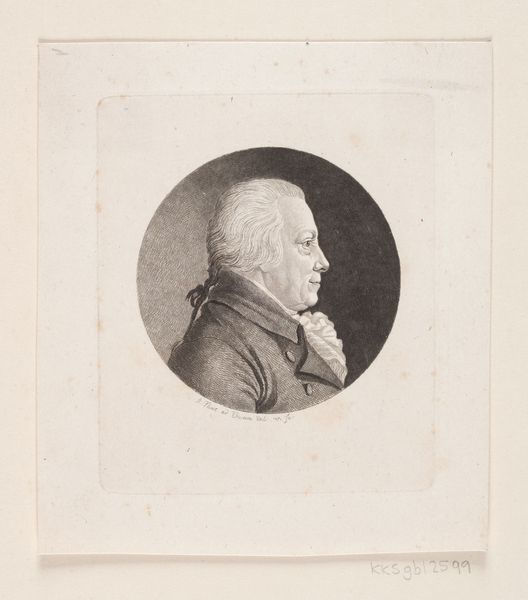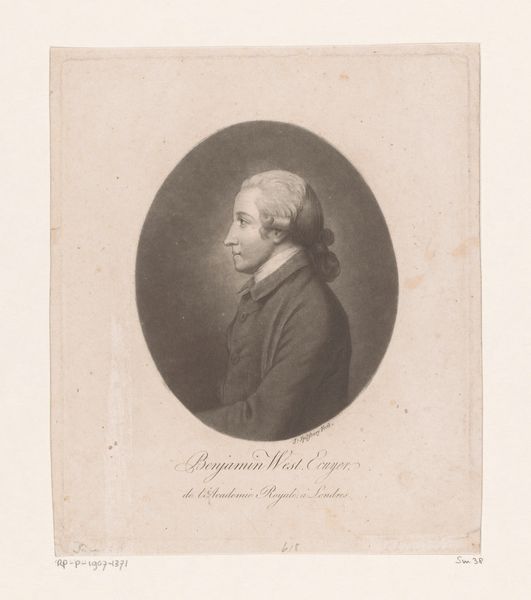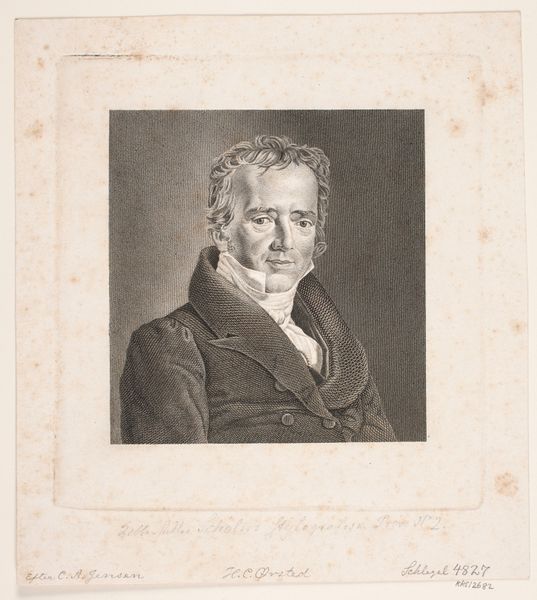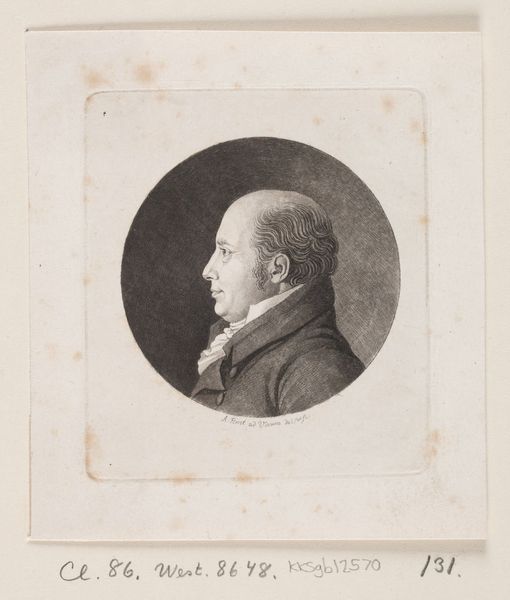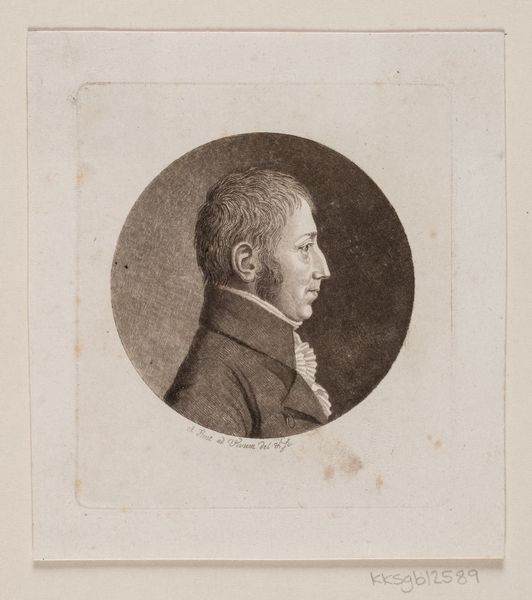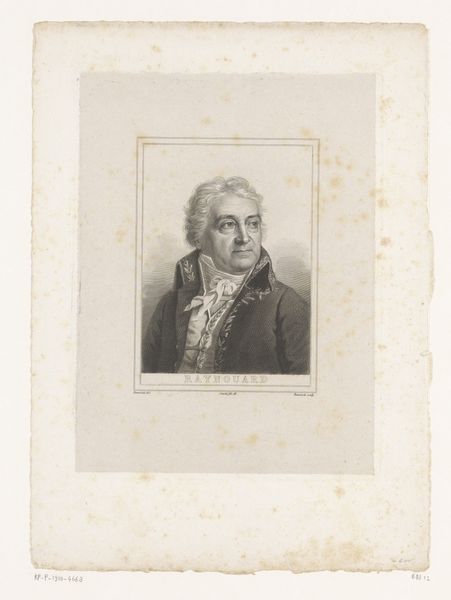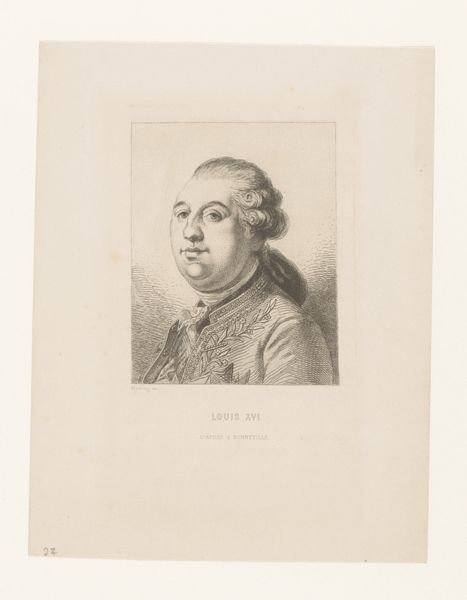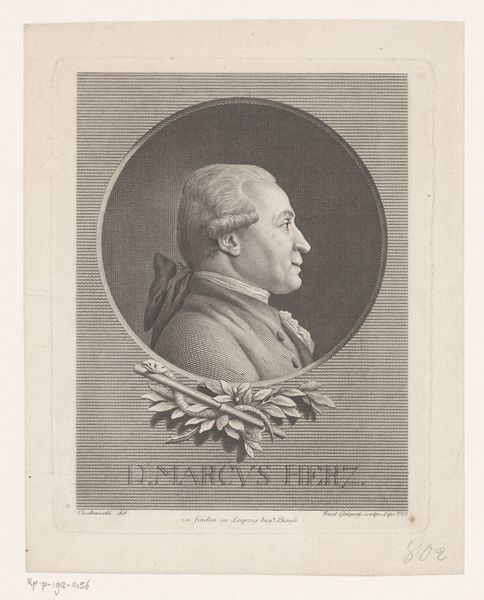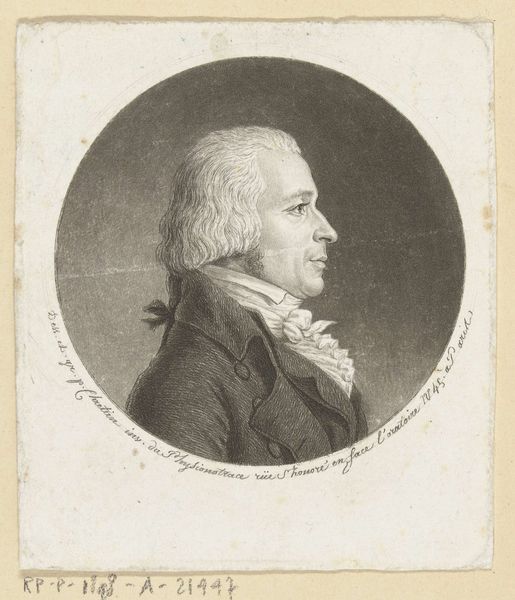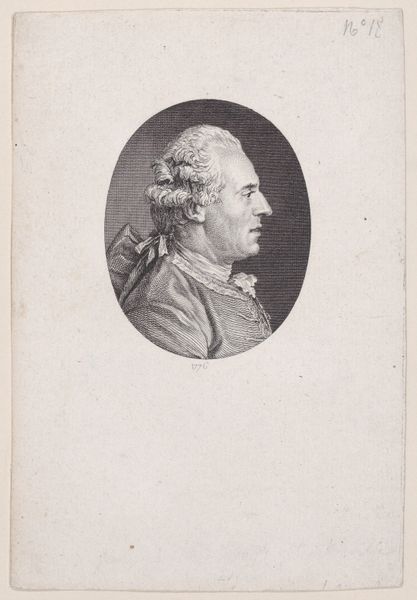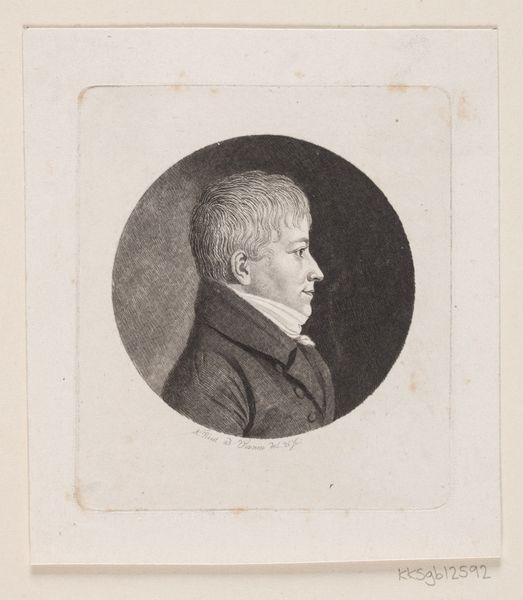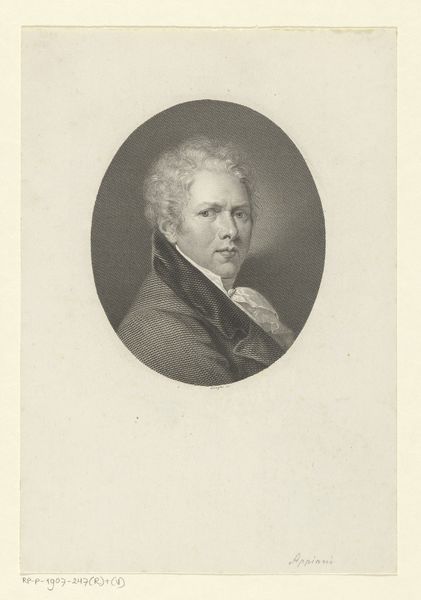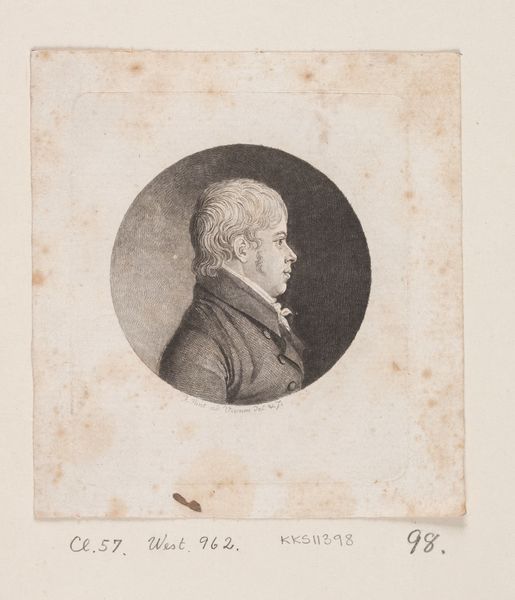
drawing, print, pencil
#
portrait
#
pencil drawn
#
drawing
# print
#
charcoal drawing
#
pencil drawing
#
romanticism
#
pencil
#
academic-art
Dimensions: 63 mm (None) (billedmaal), 92 mm (height) x 78 mm (width) (plademaal)
Curator: Immediately, the composition's formal constraints strike me; it feels like a rigid structure trying to contain the sitter's...something. Discomfort, perhaps? Editor: We are looking at Andreas Flint's "Unknown Man's Portrait," likely made sometime between 1767 and 1824. It’s a pencil drawing and print, a medium that lends itself to replication and dissemination. It gives a romantic-era snapshot that carries strong cultural messages regarding male social role. Curator: A print then; intriguing, a reproducible image designed for distribution! Observe the layered texture achieved through the combination of pencil and print techniques. This process suggests it might aim to reach a broader audience. The rendering of his clothing in detail draws my attention; I see labor implied in those meticulously etched buttons. What could those symbolize for the audience? Editor: Indeed. That clothing, indicative of military status and social standing, highlights class divisions of the era, how uniforms dictate much for certain individuals. Think of Foucault's analysis of power structures manifested through the materiality of clothing, these details contribute to that individual's power or lack thereof within the era's hierarchies. Is it accidental, I wonder, that we don't know the sitter's name. Curator: Absolutely! And the sitter's tight-lipped expression reads almost as passive resistance, framed by this elaborate and seemingly mandated attire. Editor: This tension— between enforced identity and implied opposition—mirrors larger social struggles occurring at that moment in Scandinavian history, post-Enlightenment tensions, revolutionary sentiments. And those material pressures manifested visibly as portraiture became ever more tied up with expressions of bourgeois identity. Curator: A tangible distillation of social friction. Analyzing the material of Flint's process has revealed layers that might typically get missed. The interplay between presentation, dissemination, labor, resistance and identity enriches how we understand those earlier worlds and maybe our own. Editor: I agree, considering those intersectional perspectives reveals a visual statement rife with nuance and potential subversive meaning for the right viewers. This print serves as a potent reminder of both past struggles and still existing structures around social roles and power, presented by someone lost to history.
Comments
No comments
Be the first to comment and join the conversation on the ultimate creative platform.
